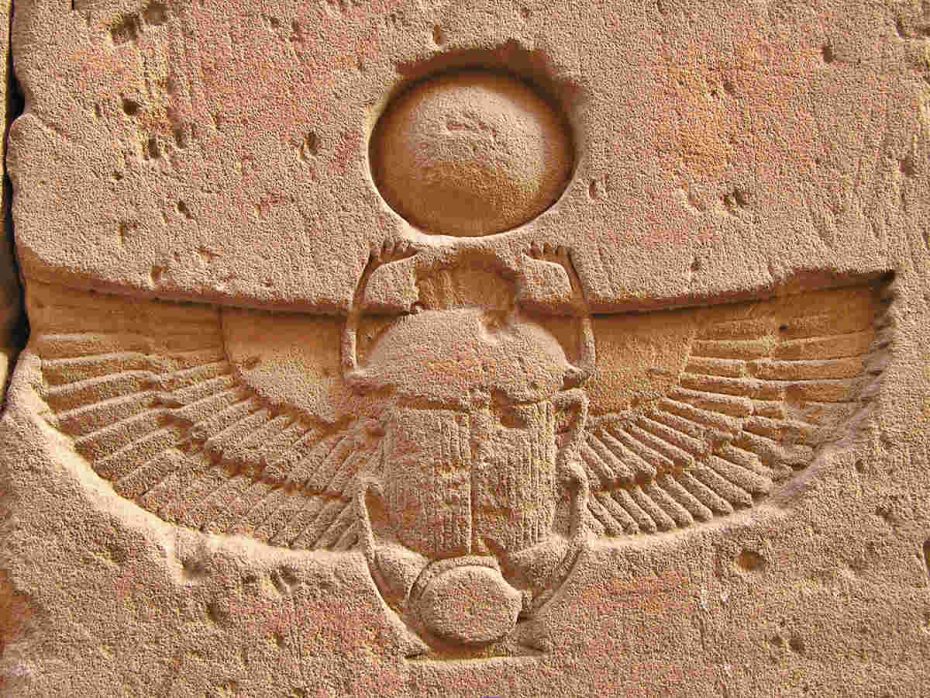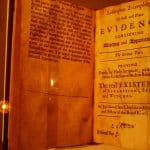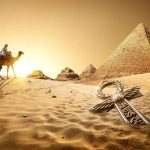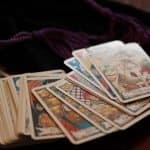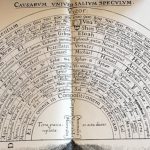The name scarab, derived from the Latin scarabaeus, refers to a beetle, either Scarabaeus sacer or Scarabaeus aegyptiorum. This beetle is prevalent not only in Egypt but also in neighboring Mediterranean countries. The scarab was known as Khepera by the ancient Egyptians, and it was the odd symbol of the same-named deity.
Khepera was a manifestation of the sun deity Ra. This deity was shown as a person with a beetle on or above his head, or as a human body with a scarab for a head. Another version of the ancient symbology depicts the sun-god as a solar disc with the scarab at its center.
Egyptian Scarab Legend and Origin
From the earliest dynasty period, Egyptians revered this beetle, and it became connected with numerous divinities who came into favor during the many centuries of Egyptian history.
Plutarch notes that the reverence that this small bug gained was due to its behavior. The scarab deposits its eggs in a little ball of dung that it rolls around with its hind legs until it forms a nearly flawless sphere (See video below). In this manner, the beetle is able to move the eggs to the best location for hatching.
The scarab supposedly rolled its ball to the Nile, according to ancient Egyptian folklore; however, this is most likely mythology. Initially, the impregnated dung ball was connected to the sun, and it was believed that Khepera, in his scarab form, had rolled the solar orb across the sky.
The Meaning of Scarab Symbol
Over time, the bug’s actions became less important, and the scarab hieroglyph changed from being linked to the sun to being linked to the idea of immortality. The Egyptian term Kheperi means “to be, to become,” and by extension, “to endure or to be revived.” The term also refers to something incredible, a marvel surpassing human comprehension.
Therefore, it is not unusual to find scarabs of various shapes, sizes, and materials within Egyptian tombs or encased in their mummy wrappings. James Bonwick writes of the scarab, “Its remarkable fecundity in the warm mud of the Nile was once thought to mark the vital force of the sun. But it was as a type of self-existence, or self-engendering deity, that it was pronounced most worthy of worship.”
The scarabaeus was thought to multiply without the assistance of a female assistant. It released seed, rolled it in mud, and then left the whole thing for the sun to hatch. Since it gave birth to itself like the gods, it was a beautiful sign of man’s resurrection or rebirth. According to Auguste Mariette Bey, this symbol of hope flourished from the 3rd dynasty to the period of Cambyses. We read in a litany about ‘the beetle that folds its wings,’ pointing to the remainder of the rising dead.
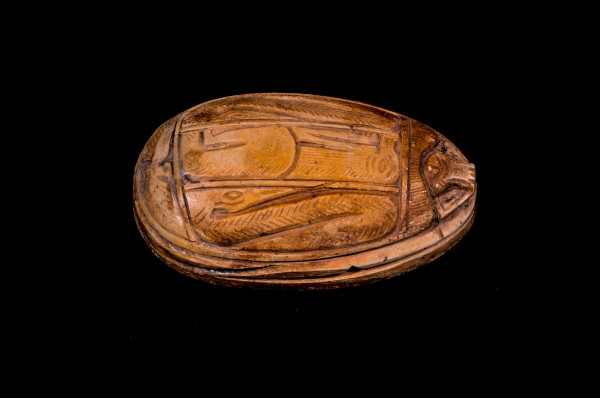
Characteristics of Egyptian Scarab Artifacts
Scarabs come in so many different shapes and sizes that listing them all would be difficult. Egyptians used ones that were between a quarter of an inch and more than three inches long. Most of them were made of faience, a type of polished clay, and were green or blue. They are sometimes made of stone, basalt, jasper, or cornelian.
It is rare to find ancient specimens in materials like lapis lazuli or amethyst, and most of them come from when the Romans ruled Egypt. Most of the scarabs that have been found are not very well made, which suggests that they were made in large numbers without much thought to quality. Remarkable specimens with significant inscriptions can be quite expensive.
The well-finished scarab amulet, or seal, is a precise representation of the beetle’s main characteristics. The flat underside is engraved with a cartouche or inscription, either cut or pressed. Smaller specimens are latitudinally punctured, allowing them to be strung on wire or thread or connected to a ring. Occasionally, ornate arrangements are used to embellish them.
Check out our recommendations at “Occult Bookshelf” and many free resources at our “Free Library“
The Four Kinds of Scarabs Amulets
When a beetle is in amulet form, its wings are folded under its hefty shell, but in funeral art, the wings are frequently displayed spread. Examples of this type of work can also be found in faience, where they were employed as breast decorations or pectorals.
Scarabs appear to have been worn by people of every social class, most likely as talismans around the neck. Respect was also given to the little insect itself; specimens of real scarabs in a mummified state are present.
Alfred E. Knight categorizes scarabs into four categories: funeral, talismanic, official, and historical. The last category is the most uncommon.
Funerary Scarabs
Since carrying funeral scarabs around during everyday work was not an issue, they are usually larger in size than talisman scarabs.
The heart scarabs are the largest in the funeral group. Although heart scarabs tend to be uninscribed, the British Museum possesses specimens with diverse religious inscriptions.
Take a look at the following artifact from the British Museum, for example.
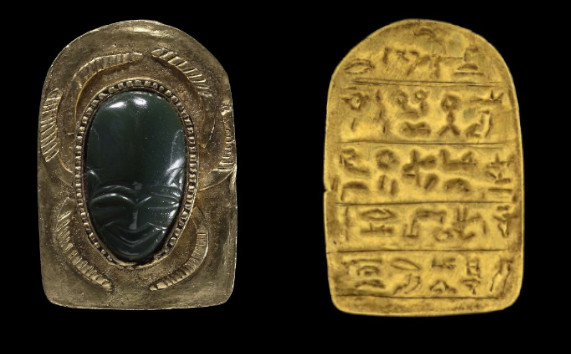
Sobekhemsaf II’s heart-scarab is made of green jasper and gold. The jasper scarab has a human head and is set into a hollow sheet gold base with a rounded back. The insect’s legs, which are stretched out on the plinth’s top, are constructed from individual sheet gold strips with lightly carved marks simulating hairs. The weakly crafted hieroglyphs from Chapter 30B of the “Book of the Dead,” which is titled “Spell for preventing the heart from opposing the deceased,” are carved around the plinth and in five horizontal rows on the underside. In the writing, the birds’ legs are missing, which was common in older magical works to keep the birds from attacking the dead person.
The heart was taken from the deceased and embalmed separately during mummification. When the deceased entered the underworld, a large stone scarab took the place of the heart. In some cases, the scarab was suspended over the heart by a string or chain, while in others, it appears to have been put into the body where the heart had been.
The writing on the scarab is transformed into a prayer or a magical invocation. For instance, “May no lie be told about me near the god, in the presence of the great god, lord of the underworld! How great thou art, triumphantly rising!”
Talismanic Scarabs
Talismanic scarabs are also known as ornamental scarabs, and they appear to have been worn as a favorite piece of adornment, particularly during the Hyksos era. This kind is occasionally engraved with the owners’ names, as well as magical formulae, depictions of patron deities, mottos, and other symbols whose meanings are still unclear.
Many of the designs were based on spirals, key patterns, and combinations of concentric circles. The crux ansata, or Egyptian cross, was thought to be good for health, and an ordinary scepter was thought to give strength and power. There were times when reptiles and other animals were on display, shielding the wearer from harm. The “eye of Horus” symbol guaranteed defense against ghosts, evil spirits, and the evil eye.
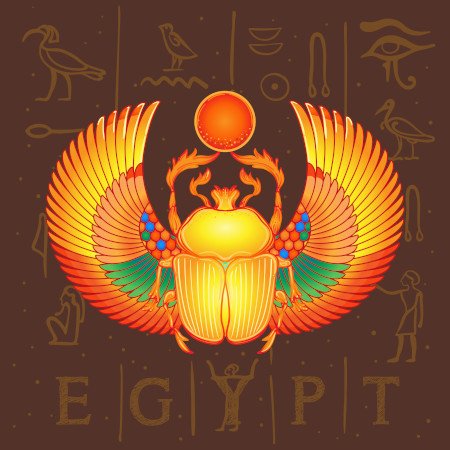
Official Scarabs
Official scarabs were frequently used as seals, and when impressed on soft clay, the inscriptions most likely passed as a type of currency. They were used to certify papers and transmit authority, as well as to mark the belongings of a family or a property. At the moment of his enthronement, the pharaoh received the royal signet, which had his names and titles engraved on it.
Numerous official scarabs accurately documented the positions, privileges, and accomplishments of their possessors. Scarabs were worn as signets by army commanders, temple scribes, doctors, and philosophers, and falsifying the inscriptions was a severe offense. Scaraboids, or seals that resemble scarabs but lack the complete delineation of the beetle, have comparable purposes and are found in large numbers.
Historical Scarabs
The “historical scarabs” are those from the time of Amenhotep III. These are typically rather large, bearing records of significant events as well as proclamations. In certain cases, the accurate delineation of the beetle may be sacrificed to allow for a larger text area.
Scarabs from early dynasties were also subsequently duplicated or copied, as is usual with most sacred artifacts. Considering that they were produced during the classical era of Egyptian culture, these replicas are, in essence, authentic and original. In reality, any scarab made in Egypt prior to Cleopatra’s era would be a genuine specimen.
The ones that were most likely to be replicated were highly detailed historical records, important talismanic items, and scarabs with the cartouches of famous monarchs whom people loved and admired for a long time.

Additional Uses of the Egyptian Scarab Symbol
Sir J. Gardner Wilkinson, a leading specialist on ancient Egyptian manners and traditions, discusses in detail the scarab’s frequent depiction in Egyptian religious artwork. Based on his studies, it represented not just the sun but also the whole world and the creative force that gave rise to the universe.
It was used as a symbol of Ptah, who created the terrestrial sphere on a potter’s wheel. It was also symbolic of Memphis’s small deity, a little dwarf or pygmy, who was said to be the master over the artisans who conceived and produced all of nature’s tangible items. According to Plutarch, the scarab was inscribed on the signets of Egyptian soldiers as a symbol of bravery.
Aside from these uses, the bug was strongly associated with astronomical occurrences, particularly the zodiac sign of Cancer, and it was virtually always used in burial ceremonies. Many times, many scarab forms have been discovered embellishing the mummy casket of a prominent person.
The Scarab Symbol in Different Cultures
Being a country of traders and merchants, Egypt spread the scarab to many of its neighboring peoples as a seal and decoration. As a result of the spread of a cultural symbol, modified scarab shapes appeared in the adornments of numerous places in the area of the Mediterranean.
Except for the funeral, Egyptian usage was carefully reproduced in several circumstances. The scarab became a widely collected artifact as Egypt’s popularity declined, and specimens may be seen in early European museums and private collections as well.
There was an increase in interest in past concepts and beliefs throughout the era of the Roman Empire. Magic was widely practiced, and esoteric cults created scarabs from materials unknown to the Egyptians. Almost any stone, including crystal and synthetic stones, was used, although the inscriptions are often corrupt since the Egyptian language key was lost in an early period.
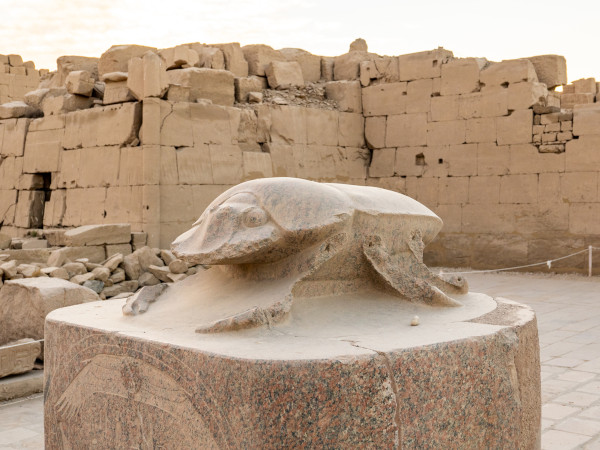
Some Gnostic talismans have scarabs on them, and these are often decorated with pictures of the later gods of the Osirian pantheon.
Later, during the Renaissance, there was a rebirth of Egyptian art, and talented craftsmen carved and polished magnificent scarabs. These were typically placed in jewelry and were uninscribed. There are often a few dashes or random markings on the underside, but they are never to be confused with real hieroglyphics. Another wave of interest in Egyptian art happened in France during and right after the Napoleonic era.
End Words
Additionally, it’s worth mentioning that this wasn’t the only insect that was revered or treated with great respect. The fly bothered the ancient Egyptians and the modern Arabs. They connected it with the idea of evil and named its main demon, Beelzebub, “The Lord of Flies.” Thus, the Beelzebub of Christian demonology during the Middle Ages.
The Nile Valley residents had the same attitude about the ant as King Solomon. The ant was considered a sign of wisdom in the Nile Delta because, despite the annoyances it caused, it was skilled at detecting items well concealed—especially food.
As a result, we have a sort of alphabet of moral symbols generated from people’s experiences. Our current love for scarabs comes from this old language of ideas. Because the scarab represents the hope of salvation in everyone’s heart, we see it as a lucky charm and an important ornament.
Check out our recommendations at “Occult Bookshelf” and many free resources at our “Free Library“
This article is based on 1958 Horizon magazine.
♦ If this article resonates with you, please join our newsletter by using the forms on this website so we can stay in touch.
Stay in Touch
 Join our newsletter by using the forms on this website or click here!
Join our newsletter by using the forms on this website or click here! Follow us on Google News
Follow us on Google News Follow us on Facebook
Follow us on Facebook
Featured image from Depositphotos

